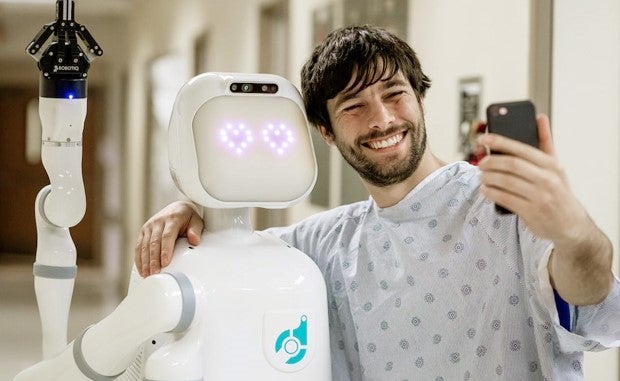

Collaborative Robot Aims to Ease Stress on Nurses

A new coworker has shown up to assist nurses at select hospitals around the country. Able to work 22-hour shifts without needing a break, she performs nonclinical tasks that often take nurses away from providing direct patient care — everything from delivering lab samples and medications to retrieving supplies and distributing personal protective equipment.
She’s four feet tall, weighs 300 pounds but never eats and doesn’t talk much. Her name is Moxi and she’s a collaborative robot from Diligent Robotics. The company is hoping Moxi could help to ease the strain on nurses and other health care workers.
Designed by two female robotics experts, Moxi is the first in-production robot that uses artificial intelligence and continuously adapts to changes in hospital workflows by learning from the humans with whom it interacts.

Moxi comes equipped with a mechanical arm, gripping hand and mobility that enables it to carry up to 70 pounds. The unit can navigate hospital corridors and elevators and make deliveries to nurses and other staff.
How Robots Are Being Deployed
ChristianaCare recently bought five of the collaborative robots or “cobots” with a $1.5 million grant from the American Nurses Foundation. They will be deployed to 11 inpatient units to work alongside more than 400 nurses. The units will be integrated with ChristianaCare’s Cerner electronic health record platform, enabling them to anticipate when nurses need equipment or supplies.
Other organizations, including Cedars-Sinai in Los Angeles, Mary Washington Hospital in Fredericksberg, Va., Shannon Medical Center in San Angelo, Texas, and Medical City Dallas Hospital have deployed Moxi robots.
Moxi is one of many robotic applications in health care. Robots have been developed to disinfect hospital spaces, assist physical therapists and deliver supplies. A Dutch medical robotics company, Vitestro, recently announced results of clinical studies of its autonomous blood-drawing robot that already has performed 1,500 automated blood draws on more than 1,000 patients.
But what some find intriguing is Moxi’s potential to free nurses of some of the repetitive tasks that take them away from patients and perhaps be part of the solution to America’s nursing shortage. A recent report on Nurse.org, however, questions the robot’s ability to truly impact the nursing shortage due to its limited applications in a nursing setting and suggests hospitals leaders consider whether adding nurses would be a better investment than adding robots.
Cybersecurity risks associated with robots also need to be evaluated, notes a Tech Crunch report.



